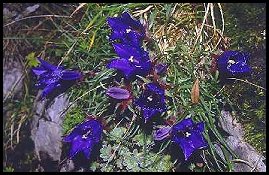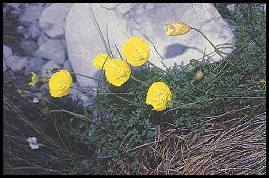The presence of diverse associations of heat-loving (thermophilous) Balkan and sub-Mediterranean plants in close proximity to Circumpolar, Arctic and Alpine species is a unique characteristic of the massifs of South Western Romania, including Retezat National Park.
In places there are associations of plants such as the sub-Mediterranean campion (Saponaria bellifolia) with bearberry (Arctostaphylos uva-ursi), which is an arctic-alpine heath common in the mountains of Scotland. |
|---|
Total Number of Plant Species
The total number of flowering plants in Romania is uncertain but is probably around 3400.
Retezat National Park is reckoned to be home to a total number of 1 180 (MAB, 1986) or 1 050 plant species (Burford, 1996).
Total Number of Endemics
The total number of endemic plants in Romania is estimated to be between 41 (Groombridge, 1994) and 101 (WCMC BGBASE, 1998) while the Carpathian Mountains as a whole are home to maybe 127 "Carpathian Endemics".
Burford claims that three quarters of all the Alpine and sub-Alpine plant species occurring in Romania can be found on the limestone massif within Retezat National Park. However the number of endemics present within the National Park is very uncertain.
|
See Table 7 for data on the endemic flora of Retezat National Park. |
|---|
A Centre of Endemicity?
The UNESCO Man and Biosphere Programme datasheet for Retezat (MAB, 1986) claims that this area appears to be a "Centre of Endemicity" for Hieracium (Compositae) but this is a very variable genus with over 400 "microspecies" present within the UK alone (Rose, 1981).
Iurie Maxim of ProNatura claims that Retezat is the European "Genetic Centre" for Poa (Graminae). (See Reference)
The Information Problem
In 1993 the Biological Research Institute in Cluj, Romania published an ecological study of Retezat but this is not easily available in the UK. (BRI, 1993).
The Romanian Government's Ministry for Waters, Forests and Environmental Protection (MWFEP) has an extensive ecological study of the area but it has not been published and it remains effectively unavailable.
| Despite being Romania's longest established Protected Area and a Biosphere Reserve, it is clear that published botanical data is very poor. |
|---|








